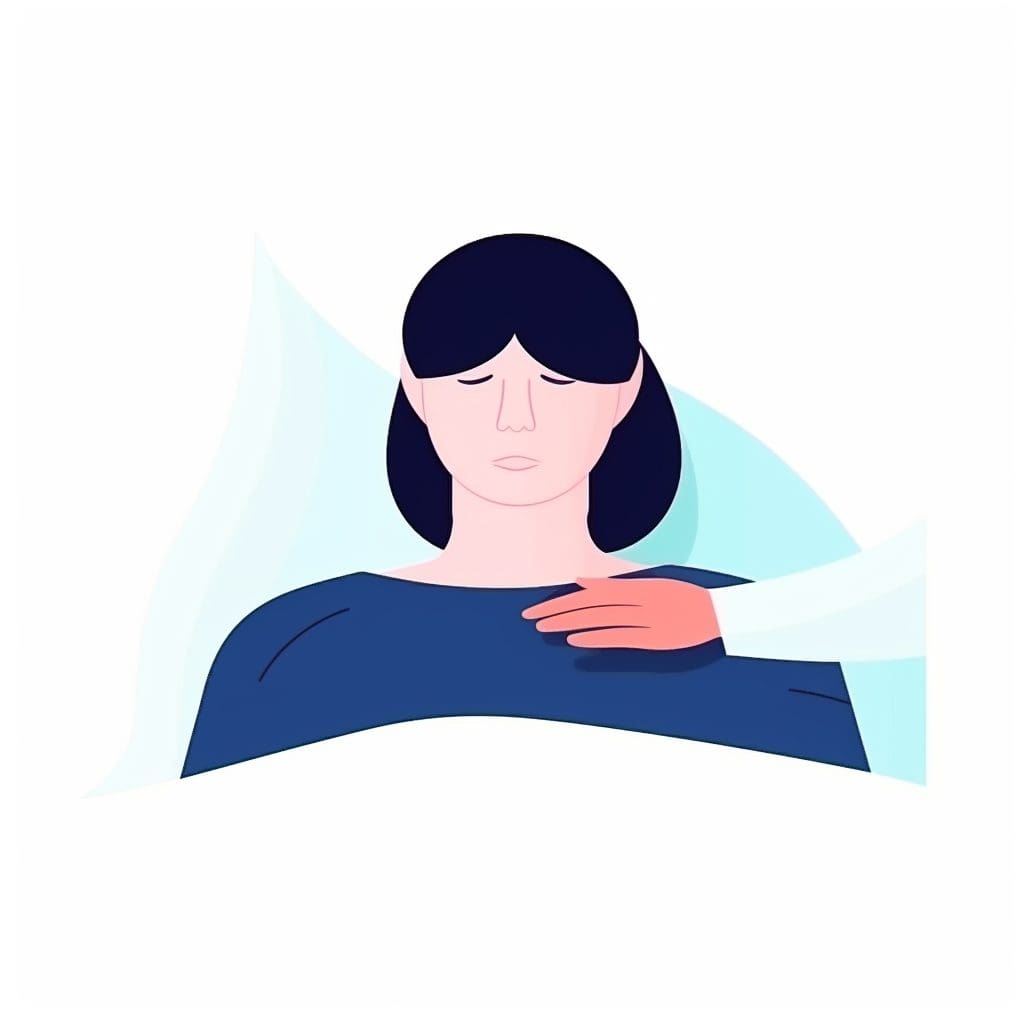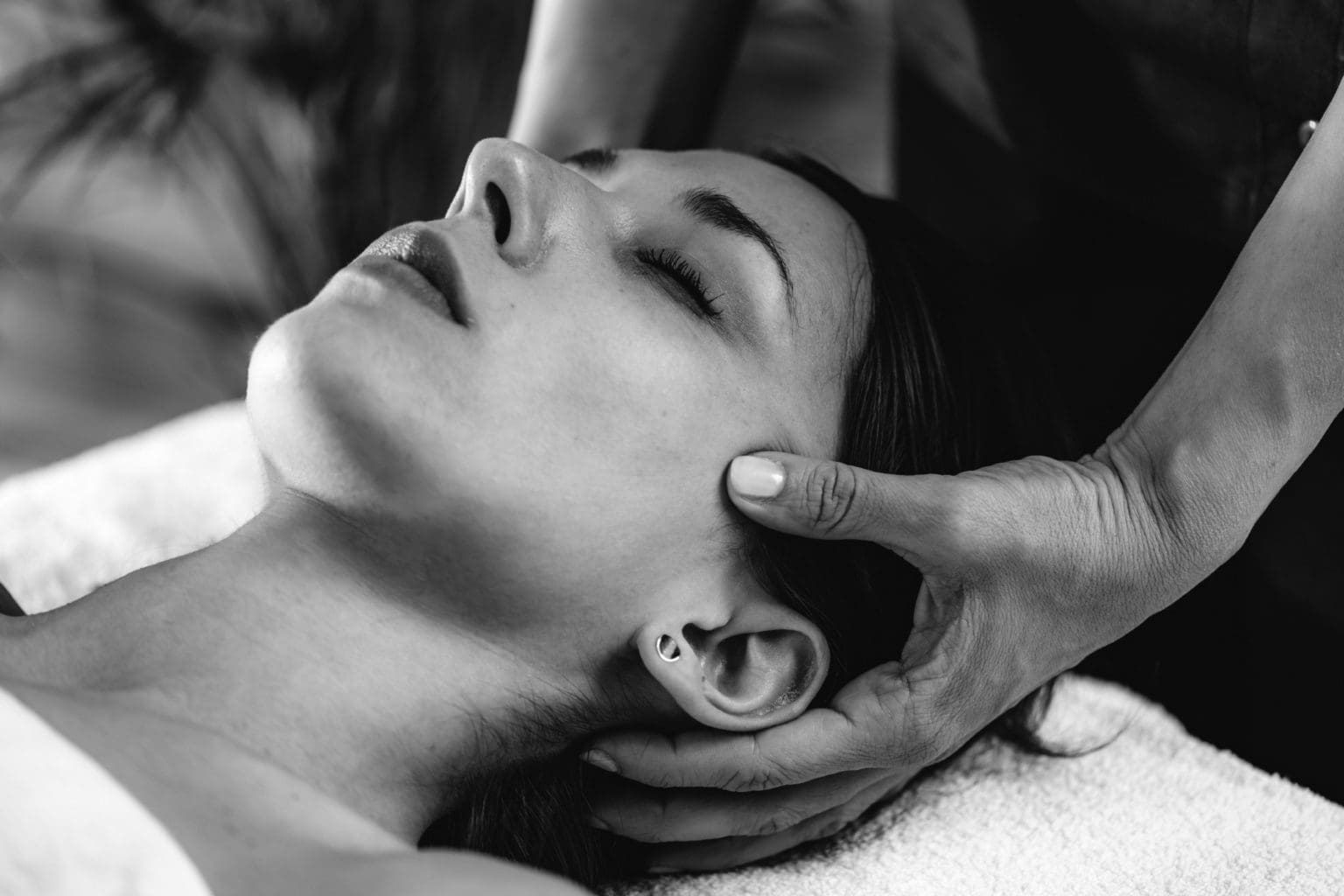Migraines are a debilitating and often painful condition that can significantly impact a person’s quality of life.
While medication can provide relief, it’s not always effective and can have unwanted side effects.
Craniosacral therapy is an alternative treatment that can help with migraines without using drugs. In this article, we’ll explore craniosacral therapy, how it works, and how it can help with migraines.
What is Craniosacral Therapy?
Craniosacral therapy is a gentle and non-invasive therapy that works to improve the function of the central nervous system.
It involves the therapist using light touch to feel for any restrictions in the craniosacral system, including the bones, tissues, and fluids surrounding and protecting the brain and spinal cord.
By using gentle manipulations, the therapist can release any restrictions and improve the flow of cerebrospinal fluid, which can improve the function of the nervous system.
From the Craniosacral Therapy Association
Migraines are a complex and multifactorial condition that can be caused by a variety of factors. Here are some of the most common causes of migraines:
- Genetics: Genetics can play a role in the development of migraines, as the condition can be passed down from parents to children.
- Hormonal Changes: Hormonal changes, such as those that occur during the menstrual cycle, pregnancy, or menopause, can trigger migraines.
- Environmental Triggers: Environmental triggers, such as certain foods, smells, or changes in weather or altitude, can trigger migraines in some people.
- Stress and Anxiety: Stress and anxiety can cause tension in the body, which can lead to migraines in some people.
- Sleep Disturbances: Sleep disturbances, such as insomnia or sleep apnea, can trigger migraines in some people.
- Physical Exertion: Intense physical exertion, such as heavy lifting or strenuous exercise, can trigger migraines in some people.
- Medications: Certain medications, such as oral contraceptives or blood pressure medications, can trigger migraines in some people.
- Dehydration: Dehydration can cause migraines in some people, as it can lead to changes in the balance of electrolytes in the body.
It’s important to note that not all migraines have a specific cause, and some people may experience migraines for no apparent reason. If you are experiencing migraines, it’s important to consult with a healthcare professional to determine the underlying cause and develop an appropriate treatment plan.
How Does Craniosacral Therapy Help with Migraines?
Craniosacral therapy can help with migraines by addressing the condition’s underlying causes. Various factors, including stress, tension, and hormonal changes, can cause migraines.
By releasing any restrictions in the craniosacral system, the therapist can reduce tension in the muscles and tissues around the head and neck, which can help to alleviate migraines.
During a craniosacral therapy session, the therapist will gently examine your craniosacral system, using light touch to feel for any restrictions or areas of tension.
The therapist will then use gentle manipulations to release any restrictions and improve the flow of cerebrospinal fluid.
The craniosacral system plays a vital role in the function of the nervous system, which controls all bodily functions, including pain perception. By releasing restrictions in the craniosacral system, craniosacral therapy can help improve the nervous system’s function and reduce pain perception.
Craniosacral therapy can also help reduce stress and promote relaxation, which can benefit those who experience migraines triggered by stress. By promoting relaxation, craniosacral therapy can help reduce body tension and alleviate migraines.
One of the unique benefits of craniosacral therapy is that it is a non-invasive and gentle therapy that does not involve medication use. This makes it a safe and effective treatment option for those who cannot take medication or prefer a non-pharmacological approach to treatment.
What to Expect During a Craniosacral Therapy Session
Knowing what to expect during a session is important if you want to try craniosacral therapy as a potential relief for migraines. Here is a general outline of what to expect during a craniosacral therapy session:
- Discussion of Medical History: Your therapist will begin the session by discussing your medical history and any current health concerns you have. This is important for the therapist to understand your overall health and develop an appropriate treatment plan.
- Examination of Craniosacral System: The therapist will then gently examine your craniosacral system, using light touch to feel for any restrictions or areas of tension. The therapist may use their hands to feel the rhythm of the cerebrospinal fluid, which can help to identify any areas of restriction.
- Gentle Manipulations: Based on the examination results, the therapist will then use gentle manipulations to release any restrictions and improve the flow of cerebrospinal fluid. These manipulations may involve gentle pressure on the bones or tissues of the craniosacral system or gentle stretches to release tension.
- Promotion of Relaxation: The therapist will promote relaxation throughout the session by creating a calm and peaceful environment. They may use techniques such as deep breathing or guided imagery to help you relax.
- Session Length: A craniosacral therapy session can vary but typically lasts around 60 minutes. Depending on the severity of their migraines, some people may need multiple sessions to see significant results.
It is important to note that craniosacral therapy is a gentle and non-invasive therapy that should not be painful. You may feel some sensations during the session, such as warmth or tingling, but these sensations should be mild and comfortable.
Craniosacral therapy can be an effective and safe treatment option for migraines. If you are interested in trying craniosacral therapy, it is important to consult with a qualified Manual Osteopathic Therapist to determine if the therapy is appropriate for your individual needs.

The Science Behind Craniosacral Therapy
While the science behind craniosacral therapy is still being explored, some studies have shown that it can be an effective treatment for migraines. One study published in the Journal of Manipulative and Physiological Therapeutics found that craniosacral therapy effectively reduced the frequency and intensity of migraines.
Another study published in the Journal of Alternative and Complementary Medicine found that craniosacral therapy effectively reduced pain and improved quality of life in those with chronic migraines.
Resources:
- The Journal of Osteopathic Medicine - Manual Craniosacral Therapy May Reduce Symptoms of Migraine Headache
- Craniosacral therapy for chronic pain: a systematic review and meta-analysis of randomized controlled trials
- Craniosacral Therapy: A Comprehensive Review of Its History, Efficacy, and Biomedical Mechanisms
Craniosacral Therapy FAQ's
Q1. What is craniosacral therapy?
A1. Craniosacral therapy is a gentle, non-invasive therapy that involves the therapist using light touch to feel for any restrictions in the craniosacral system, including the bones, tissues, and fluids surrounding and protecting the brain and spinal cord.
Q2. How can craniosacral therapy help with migraines?
A2. Craniosacral therapy can help with migraines by addressing the condition’s underlying causes. By releasing any restrictions in the craniosacral system, the therapist can reduce tension in the muscles and tissues around the head and neck, which can help to alleviate migraines.
Q3. What can I expect during a craniosacral therapy session for migraines?
A3. During a session, the therapist will gently examine your craniosacral system, using light touch to feel for any restrictions or areas of tension. The therapist will then use gentle manipulations to release any restrictions and improve the flow of cerebrospinal fluid.
Q4. Is craniosacral therapy painful?
A4. No, craniosacral therapy is a gentle and non-invasive therapy that should not be painful.
Q5. How many craniosacral therapy sessions are needed to see results for migraines?
A5. The number of sessions needed can vary depending on the individual and the severity of their migraines. Some people may see results after just a few sessions, while others may need more.
Q6. Can craniosacral therapy be used in conjunction with medication for migraines?
A6. Yes, craniosacral therapy can be used in conjunction with medication for migraines. It is always recommended to consult with your healthcare provider before starting any new treatment.
Q7. Are there any side effects of craniosacral therapy for migraines?
A7. Craniosacral therapy is generally considered safe and has no known side effects.
Q8. Does insurance cover craniosacral therapy for migraines?
A8. It depends on your insurance plan. Some insurance plans may cover craniosacral therapy, while others may not.
Q9. How do I find a qualified craniosacral therapist near me?
A9. When looking for a qualified craniosacral therapist, it’s essential to do your research. Look for a therapist with proper training and certification, and experience working with migraines. You can also ask for recommendations from your healthcare provider or other healthcare professionals.

